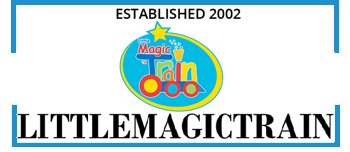The wonderful Joanna Grace from “The Sensory Projects” has written this fab blog to help us understand what is meant by sensory engagement.
What is sensory engagment?
We all know children are more interested in a hands on learning experience than a chalk and talk one (adults too), sensory engagement aims to take that one step further.
Our primary means of accessing information in the world is our senses, as we begin our cognitive journey we begin with a sensory exploration of our surrounds, that lays the foundation blocks for our understanding. We build upon our sensory understanding of the world to create anticipation, curiosity and reason.
Teaching in a sensory way is super inclusive as it invites everyone to join in, no matter where they are cognitively. When our senses are involved in learning and participation more of our brain is stimulated, this is what makes it more interesting and makes us more likely to retain that information. Think of the lessons you remember from school, it is likely they were the ones with the Bunsen burners, or where you sang or moved, the ones where your senses are involved.
Sensory engagement promotes cognition and memory, it supports communication and people’s ability and readiness to learn, and it is good for mental health too.
I am a sensory engagement specialist, often times in my work I am trying to draw a distinction between sensory and SENSORY. Because of course everything can be seen, touched, even tasted, arguably all experiences are sensory, but I mean something more than that. I mean SENSORY, not sensory!
To be SENSORY I look for experiences that draw the attention of the senses alone, so an experience that even if you have no understanding will still be interesting to your sensory systems, or experiences that fill a whole sensory system.
Here is an example:
A teacher telling a story about a child finding treasure at the end of the rainbow might hold up a picture of a rainbow to further engagement with this story. The child who understands that the story is about a rainbow will look to the picture to find out what the rainbow looks like. It is their understanding, their curiosity, that draws them to that image, not their senses. Indeed their sight maybe drawn by another bright object in the room, or by a light source. This is sensory.
If I were to try to tell that same story I might prepare by sourcing some lovely coloured cellophane, as the child in the story steps into the rainbow to pick up the treasure I will invite the child I am sharing the story with to look through sheets of coloured cellophane – that change the colour of EVERYTHING they see – or perhaps I would hold the sheets over the end of a torch and bathe that child in the different colours of light. This is SENSORY.
I write sensory stories, these are concise narratives in which each sentence of the story is accompanied by a rich and relevant sensory experience. As the story unfolds the person listening gets to touch things, taste things, smell things, have their vision delighted, their ears excited, they get to move and find themselves in space. They are fantastically engaging.
In my work I share sensory stories with people with profound and multiple learning disabilities, people who face enormous barriers to accessing learning and the enjoyment of sensory stories. I also share sensory stories with primary school children, using them as a tool for creative writing, and secondary school children, using them as a comprehension challenge (can you boil a Shakespeare play down into 10 essential sentences and 10 sensations – if a picture speaks a thousand words just think how many words 10 sensations could equate to). And I’ve shared sensory stories with adults and university students.
Often times when people are looking to be inclusive they start with a relatively complex task and try to strip it back to make it easier so someone who faces more barriers to learning can access it, this can be a depressing process, what you are offering feels like it gets less as you work to make it accessible. But if you start at a sensory level and work up, it is easier, more fun, and more inclusive, and it doesn’t lessen the offer it enriches it for everyone.
To find out more about how Joanna can help you please visit her website www.TheSensoryProjects.co.uk
or follow her for fab and enlighting posts on:
